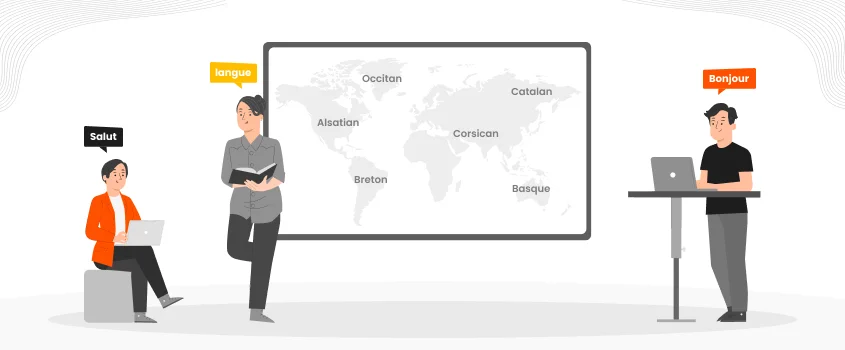We have witnessed huge IT evolution and we are going to witness it even more. This state of flux in IT revolution has brought out many changes in our life and different aspects of the society. Similarly, it has also changed the way we seek our economic prospects and how we utilize them to meet the new demands of our businesses and economic development.
Transborder businesses hampered the demand for the best translation services to localize the business. Localization helps the businesses to build the potential customers across the border and to engage them to increase the revenue. Website translation is a crucial element of localization which is necessary to make your business in accordance to the customers of the local market. So, with IT advancement, website localization has also undergone many changes and these changes could be marked as the evolutionary phase of the website revolution.
These phase are basically divided into three phases, given below:
As this was used in the initials days and was, like many other early developments, costly, time-consuming, less advanced and technological less efficient. If you wanted to translate your website in ten languages, then you had to translate it separately in ten different languages i.e. you had to make ten different websites for each language. Sounds painful? Well, it actually was painful, especially for the business who had an ever evolving marketing strategies, so they had to go through the language translation process every time. This process involved cutting and then pasting of the content separately for each website. You should be thankful that this phase is over … phew!
After website replication method came the CMS (Content Management System) which was more advanced than website replication as you didn’t had to do cutting and pasting of the content in all the websites of different languages. In this system a content management system was used for storing and managing the content. This phase of the website translation is marked with more easement in website translation as time, cost and effort required for translation of lessened; hence, enabling more businesses to go for website translation for foreign market.
Net-proxy is until now the most advanced form of the website translation – making the website translation as seamless as possible. In this form of the website translation, you neither need to cut and paste your website across different websites nor do you have to store your data in the system, because your website is being translated on the spur of the moment within your website. You just get hand on your parent website (in whichever language), other languages are handled by the back end actors who have access to your website and translate your website in the required language through detecting its requirement through the proxy.
So, website translation advancement is all thankful to the IT advancement which has made it possible for businesses to opt website translation without any fuss and furor.

When you translate to or from the French language, considering linguistic distinctions and dialects, it’s not as simple as translating
Read more
As you know that in this age of development science is captivating in every field. In the same way medical
Read more
Medical claims are one of the insightful progresses. You can save your time and get to the treatment as soon
Read more
Riyadh is the capital of Saudi Arabia, and the largest metropolis of the Arab country. Boasting of a population of
Read more
Jeddah, a Saudi Arabian port city on the Red Sea, is a modern commercial hub of trade and commerce. Equipped
Read more
Khobar (also known as Al-Khobar) is a city located in the Eastern Province of the oil-rich Kingdom of Saudi Arabia.
Read more
Bangalore, officially known as Bengaluru is the capital of Karnataka, the southern Indian state of India. Having a huge population
Read more
Pune, also known as Puna, is the second largest city in the west-central Indian state of Maharashtra. It is the
Read more
Mumbai (formerly known as Bombay) is the largest city of India and a cosmopolitan metropolis. Located on India’s west coast,
Read more

